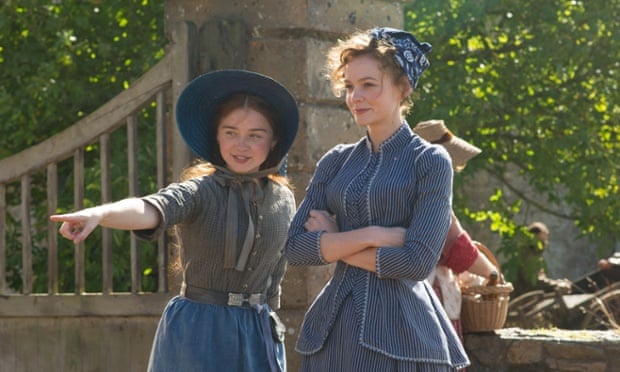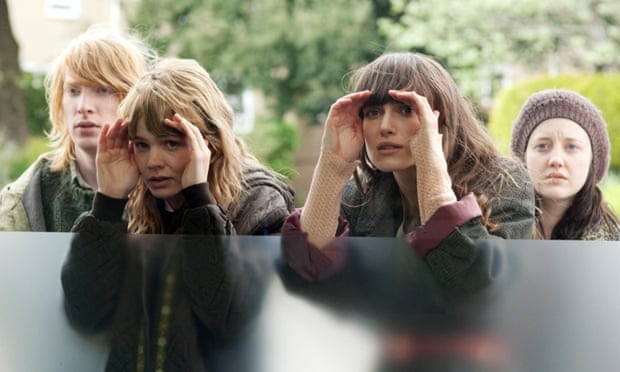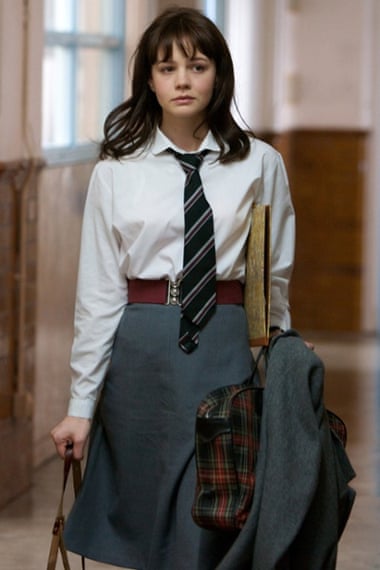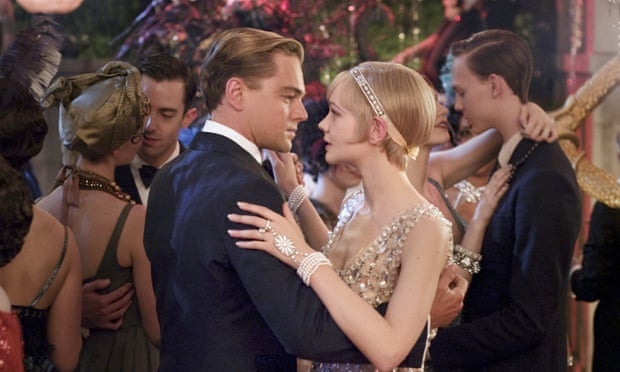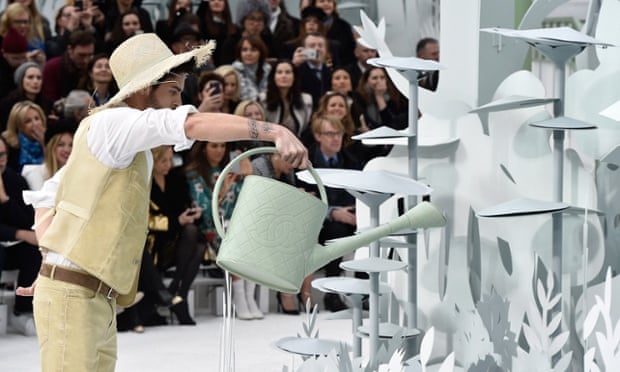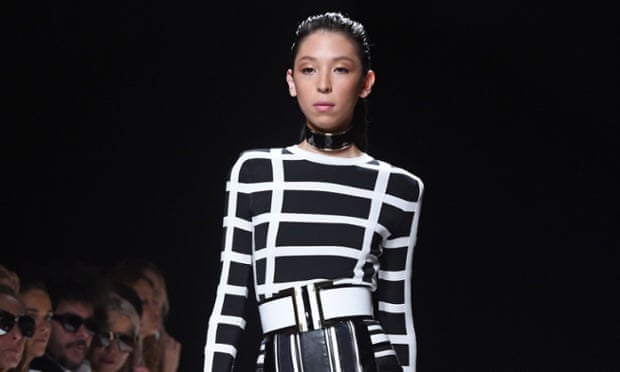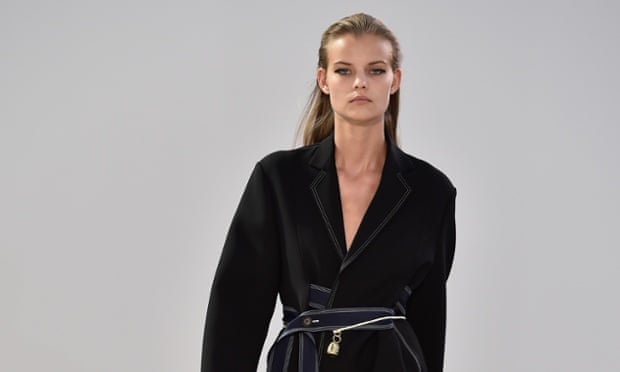Last night New York hosted this year’s Met Gala, attended by a star-studded
guestlist, from Rihanna, to Lady Gaga and Jennifer Lawrence, with their black tie attires joining the history of an iconic red carpet.
Basically, all the biggest stars from the worlds of fashion, Hollywood and music attend every year to the annual fundraising event, hence why the highlight of the night is the red carpet, as celebrities parade in their custom made designer gowns.
The event marks the grand opening of the Costume Institute's fashion exhibition held at New York's Metropolitan Museum of Art. The theme of the exhibition provides the dress code for the night, which serves as the inspiration for designers. This year’s theme is China: Through The Looking Glass, which goes some way to explain some of the outfits (yes, that hat worn by Sarah Jessica Parker).
However, the Met Gala has a long and varied history; ever since the first exhibition was held in 1971, entitled Fashion Plate, the world’s eyes have been on the guests and more importantly, their gowns. We’ve delved through the archives to find out how red carpet fashion has changed through the years.
It comes as no surprise that many trends return year after year, from the seventies through to today; shoulder pads, long sleeves, asymmetric cuts, feathers, fur and kimono-inspired gowns, and last night, many of these we saw all over again.
Carolina Herrera’s structured shoulders and long sleeves worn decades ago were back, but Rita Ora and Miley Cyrus put a twist on them. Fur is a favourite at black tie events, as was seen last night on Rihanna’s caped design. And so has Emma Roberts’s one-shoulder, Sofia Vergara’s white gown, Kim Kardashian’s feathers, Amal Clooney’s ruffles and Lady Gaga’s kimono-inspired designs.
Wednesday, May 6, 2015
Tuesday, April 7, 2015
A special intensity: how Carey Mulligan quietly grabbed Hollywood's attention
Is Carey Mulligan
about to become the face of 21st-century British feminism? It’s not too fanciful
a notion: after something of a break from lead roles in the cinema, Mulligan is
about to return with an attention-grabbing double header.
First, she is playing
Bathsheba Everdene in a new adaptation of Hardy’s Far From the Madding Crowd,
due for release in May; and in the autumn she will be seen in Suffragette, as
part of an impressive ensemble cast telling the story of the votes-for-women
campaign that rocked British society before and during the first world war.
The feminist
credentials of Suffragette are not difficult to ascertain – Mulligan doesn’t
play one of the Pankhursts, but rather a lowly footsoldier called Maud – but it
is in Madding Crowd that Mulligan shows her cards. When Julie Christie played
the same role in 1967, her interpretation of Hardy’s heroine – typically
described as “headstrong” – was an impulsive free spirit, seemingly baffled as
to the effect she had on the men around her.
Mulligan, in contrast,
plays Bathsheba as a more poised, restrained figure, her resistance to marriage
and determination to run her own farm born out of a refusal to kowtow to
patriarchy. She delivers certain lines with relish – when she tells her would-be
suitor Gabriel Oak: “I hate to be thought men’s property” and, when faced with
another, William Boldwood, she murmurs pointedly: “It is difficult for a woman
to define her feelings in language which is chiefly made by men to express
theirs.”
Mulligan, 29, is not
one to campaign explicitly for causes, and told the Guardian last year that she
was “not particularly interested in politics”. Her charitable interventions have
so far been devoted more to humanitarian and medical organisations, such as War
Child and the Alzheimer’s Society – though she did come out as a feminist in the
media last year, telling Elle magazine: “I believe in equality … Celebrity
culture has made people afraid of expressing how they feel about things because
no one ever wants to say the wrong thing, but I’d happily describe myself as a
feminist.”
But perhaps Mulligan
lets her work do her talking for her. She is currently on Broadway opposite Bill
Nighy in David Hare’s Skylight, a transfer of the production that electrified
London’s theatregoers last year. Mulligan plays a socially concerned teacher
scrapping with her rich former lover (Nighy); though it does not overtly take
sides, Hare’s play is about political and social polarisation, and Mulligan has
to make a rousing speech defending social workers. The Observer’s drama critic
Susannah Clapp described her acting as “both innocent and ironic, appealing and
irritating. Her most extraordinary quality is that she seems constantly only to
be receiving, while powerfully transmitting.”
Hare, who first staged
the play in 1995, said that Mulligan is “very quiet, very purposeful, and steely
in the way she goes about a part”. Calling her “the best”, he also confirms that
Mulligan’s interest lies less in ideology than in character. “It isn’t what
Skylight says which animates her, it’s what she can be. She loves the character
of the dedicated teacher working in the East End, and it shows.”
Though it is cinema
that has made Mulligan’s name, theatre is clearly her first love and
inspiration. Landing the role of Nina in 2007 in a Royal Court production of
Chekhov’s The Seagull (opposite Kristin Scott Thomas and Chiwetel Ejiofor)
remains a career benchmark. Describing Nina as “the ultimate female role”, she
said: “I think I was looking to play her again in various incarnations.”
Hare, who saw the show
on Broadway in 2008, is outspoken in his admiration: “Carey was the greatest
Nina of my lifetime … I’ve seen two dozen, often in very great productions, but
Carey is the only one who has ever convinced me. She had an access to what she
convinced you were her own feelings – as if she wasn’t acting, but simply
existing on the stage.”
There is little in the
way of traumatic childhood or difficult adolescence to rationalise this affinity
for a character “desperate to be loved and always reaching for something she
couldn’t get”, in Mulligan’s own words. She appears to have had a childhood so
prosperous and conventional as to be anodyne: her father a hotel manager, she
lived in Germany until she was eight, before returning to England and attending
a private Catholic girls’ school in Surrey.
Although disapproving,
her parents did not actively stand the way of her youthful desire to be an
actor; she got early support and encouragement from Kenneth Branagh (after she
sent him a fan letter) and Julian Fellowes (after he gave a talk at her school).
The one thing marking her out is a deeply felt religious conviction during her
teenage years; she no longer attends church devotedly, but in 2012 ended up
married to the musician Marcus Mumford, whom she met at a Christian youth camp
as a child, and whose parents run the UK branch of the Association of Vineyard
Churches, an evangelical-Pentecostalist movement.
Mulligan’s conviction
that she could succeed as a performer resulted in an introduction to a casting
director through Fellowes and then – to her family’s surprise – a small but
visible part in the 2005 adaptation of Pride and Prejudice, playing the “silly”
fourth Bennet sister, Kitty. A series of increasingly eye-catching screen roles
followed, including Ada in the BBC’s Bleak House, a guest shot on Doctor Who,
the best friend in an ITV drama of another Austen, Northanger Abbey (playing
second fiddle to Felicity Jones), and that stellar Seagull at the Royal Court,
also in 2007.
But it was the 2009
release of An Education, the film adaptation of Lynn Barber’s memoir, that
really put Mulligan, then 22, over the top. An instant critical success,
Mulligan’s portrayal of a schoolgirl’s love affair with a conman in the 1960s
ended up with a Bafta best actress award and nominations for the Oscars and the
Golden Globe. It was a startling ascent up the acting tree, and cemented her
place on the A-list of performing talent. The film’s Danish director, Lone
Scherfig, points out that Mulligan was in every single scene of An
Education and says: “She seemed to enjoy every day and not feel the
pressure.”
The success of An
Education opened numerous doors – not least, directly to her next major film
role, in the movie of Kazuo Ishiguro’s dystopian science-fiction tale Never Let
Me Go, alongside Keira Knightley, Domhnall Gleeson and Andrew Garfield. While
watching An Education, Fox Searchlight studio boss Peter Rice texted Never Let
Me Go director Mark Romanek, who was having trouble filling the role of Kathy H:
“Hire the genius Mulligan.”
With an endorsement
like that from a major Hollywood player, Mulligan’s path was assured. It meant
that she was then able to try to align herself with major directors, and to some
extent pick the roles she would go up for. That was certainly the case with
Shame, the tough, uncompromising drama in which she played the troubled,
self-harming sister to Michael Fassbender’s sex addict.
In a discussion with
the film’s co-writer, Abi Morgan, she explained how she went about it. “My agent
called me about an extraordinary role in this film Steve McQueen was directing.
By the next day, she’d managed to get me a meeting with him. So I went in hard,
campaigning for the part ... I sat down with him in a London hotel and the
minute he started talking, I was like: ‘I’d follow you anywhere.’ That’s a great
director.”
The reaction to Shame,
with its copious nudity, untrammelled rawness and explicit subject matter helped
to modify, if not entirely destroy, Mulligan’s wholesome image – she has
described herself as “baby-faced”. Mulligan could also afford to take smaller
roles for directors with clout: she lined up Wall Street: Money Never Sleeps for
Oliver Stone and Drive for Nicolas Winding Refn and Inside Llewyn Davis for the
Coen brothers.
But the biggie was yet
to come: she beat all Hollywood’s young female acting talent to the headline
role of Daisy Buchanan in the $105m (£70m)-budget adaptation of The Great
Gatsby.
Baz Luhrmann’s
giant-scale film was released in May 2013 and Mulligan then spent the autumn of
that year filming Far From the Madding Crowd for the director Thomas Vinterberg
– after previously holding out against returning to the British-set period
movie. “I didn’t want to be labelled as that,” she told Harper’s Bazaar. “So I’d
avoided it. But I’d seen Festen and I saw The Hunt and I desperately wanted to
be in one of Thomas’s films. That made that decision.”
Then it was straight
on to Suffragette, which began shooting in February 2014, and saw Mulligan line
up with Meryl Streep, Helena Bonham Carter and Anne-Marie Duff. Hare’s Skylight
– in which she cooks a spaghetti meal live on stage – has occupied her since,
first in its London run at the Wyndhams, and subsequently on Broadway.
Still under 30,
Mulligan has reached a zone where she can take her time and pick her roles. It’s
an enviable position, but one she has appeared to achieve on the strength of her
feeling and talent for acting – rather than simply luck, looks and connections,
but which of course have all played a part. She has powerful allies and
admirers: Hare says she possesses a “special sort of intensity and of
completion”; more to the point, Scherfig says, “Anything for Carey.” You suspect
she will go far.
CV
Born
28 May 1985
Career
First: Role in the film Pride & Prejudice, but major breakthrough
was lead role in An Education, for which she received an Oscar nomination.
High
point: Lead role in The Great Gatsby, ahead of every other actor in
Hollywood. The film only received middling reviews, though.
Low
point: Her first Hollywood film, Wall Street: Money Never Sleeps. “It
was a great experience … but it didn’t feel there was a depth to the character.
It didn’t grip me in the way I wanted.”
She
says: “I’m kind of happy, and – touch wood – nothing really awful has
happened to me. But I don’t like the idea of having to mess yourself up to be a
good actor.”
They
say: “If you want to experience the shock of illumination that acting,
at its best, can achieve – and only occasionally does – you need to see Ms
Mulligan’s performance.” Ben Brantley, New York Times
Monday, March 9, 2015
Trends for spring/summer 2015: from Del boy chic to Hepworth curves, it's all in the details
1. Watering
cans
First we had
houseplants being hip then Karl sealed the deal with a quilted watering can at
Chanel Couture
2. Ballerinos
Male dancers are this
season’s style heroes. Echappé, échappé, grand jeté with Dries Van Noten,
Bottega Ventea, Haider Ackermann
3.
Geometry
Graphic shapes rule
that catwalks from Balenciaga to Balmain. Circling the square has never been so
hip.
4. Belt
japes
Wear it long,
kimono-style (Celine) or softly tied like a dressing gown (Gucci).
5. Quilts are
cool
Patchwork is
everywhere from Marni to Dries. Making your own quilt is now fashionable.
6 Destination
Woodstock
Watch out for the age
of aquarius at Topman Design, Saint Laurent and Louis Vuitton
7. Del Boy
from Only Fools and Horses
He is a 2015
tastemaker. The case for? Polonecks, sheepskin coats and 70s wallpaper are all
so now.
8. The A30 to
St Ives
A major Barbara
Hepworth retrospective is coming but the soft curves of her sculptures have
already informed the jewellery at Celine and JW Anderson.
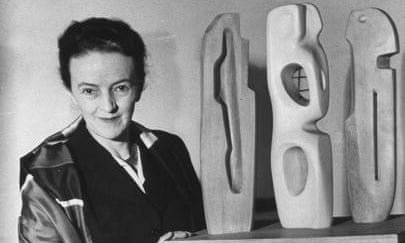
9. Wear your
heart on your sleeve – or your back
Raf Simons decorated
his jackets’ sailor collars with collage fragments of photos of his family and
friends. His most personal collection yet
10. Upscale
roughing it
Versace’s picnic
backpack. Best. Accessory. Ever.
Monday, February 9, 2015
Fashion Handbags Are Amazing Accessories
Fashionable Handbags are commonly used for different versatile usages. But the important fact is that these bags are needed to be stylish and fashionable. This task is beautifully done by Inspiration by presenting the most heart throbbing selective fashionable bags. Louis Vuitton and other high-fashion handbags. We want to make sure that you know when you are being ripped off so you can spend your well-earned money on something that is truly authentic.
Fashion handbags are amazing accessories, which are fashionable necessities, especially designed to help people carry their belongings. Fashion handbags coordinate well with an outfit. They can make or break a woman's entire look. Selecting perfect handbags is very important for women.
There are sexy, classy and smart styles available in all sizes. The endless options of colors, patterns and design make fashion handbags a versatile accessory. Custom handbags are personalized handbags, which means, handbags created according to your own choice. This way, you can buy handbags within your preferred budget. Furthermore, such bags are perfect gifts for yourself and friends, who have a good fashion taste.
For many women, fashion handbags are as much a part of their wardrobe as their dresses, suits, shirts, blouses, pants, shoes and other clothing items they wear. A fashion handbag contributes to the overall impression of any outfit, and it sends a message about the personality of the person who carries it. These may be extreme examples, but surely they illustrate how the handbag you carry completes the image you present to the world.
Popular fashion handbag materials include fabric, nylon, leather, crochet, canvas and other textile. Some fashion handbags are decorated with beads, sequins, and appliqués. Some people even carry fashion handbags that are especially designed to allow them to carry their pet with them everywhere they go!
Which handbag to choose may be complicated. There are so many to choose from. Handbags come with shoulder straps: shoulder bags; satchels are handy and do forget about the clutch purse. In reference to handbags and purses, intriguing (evaluative fashion sense) is defined by establishing a fashion statement along with the functionality of the product.
So, be sure to pick a product which would make all of those credit cards, the checkbook and hidden trinkets comfortable to accompany you during the moments of your lifestyle. That is why there are so many tote-bag options on the market today. An intelligent, fashion conscious person must be aware of their surroundings. Whether you plan to travel in the city or through urban areas, the type of purse you choose can determine your future.
Fashion handbags are amazing accessories, which are fashionable necessities, especially designed to help people carry their belongings. Fashion handbags coordinate well with an outfit. They can make or break a woman's entire look. Selecting perfect handbags is very important for women.
There are sexy, classy and smart styles available in all sizes. The endless options of colors, patterns and design make fashion handbags a versatile accessory. Custom handbags are personalized handbags, which means, handbags created according to your own choice. This way, you can buy handbags within your preferred budget. Furthermore, such bags are perfect gifts for yourself and friends, who have a good fashion taste.
For many women, fashion handbags are as much a part of their wardrobe as their dresses, suits, shirts, blouses, pants, shoes and other clothing items they wear. A fashion handbag contributes to the overall impression of any outfit, and it sends a message about the personality of the person who carries it. These may be extreme examples, but surely they illustrate how the handbag you carry completes the image you present to the world.
Popular fashion handbag materials include fabric, nylon, leather, crochet, canvas and other textile. Some fashion handbags are decorated with beads, sequins, and appliqués. Some people even carry fashion handbags that are especially designed to allow them to carry their pet with them everywhere they go!
Which handbag to choose may be complicated. There are so many to choose from. Handbags come with shoulder straps: shoulder bags; satchels are handy and do forget about the clutch purse. In reference to handbags and purses, intriguing (evaluative fashion sense) is defined by establishing a fashion statement along with the functionality of the product.
So, be sure to pick a product which would make all of those credit cards, the checkbook and hidden trinkets comfortable to accompany you during the moments of your lifestyle. That is why there are so many tote-bag options on the market today. An intelligent, fashion conscious person must be aware of their surroundings. Whether you plan to travel in the city or through urban areas, the type of purse you choose can determine your future.
Sunday, January 13, 2013
Why Fashion Handbag Is The Must Have For Every Lady
Fashionable women usually have a wide range of accessories and fashion handbag is one of the must haves. Fashion women need to look best in appearance
– the need accessories and make ups to match the event, occasion as well as the
time of the day.
Handbags in different hues and designs help enhance the beauty and elegance in your appearance when you don't know how to choose between your evening dress and your clutch/handbag for instance.

Every year, handbags will come out different styles and various trends. Popular brands include Gucci, Bottega, Veneta and many more. Brand bags are stylish and beautiful, but they are priced high. Affordable bags with no name also could bring you unexpected effects. A wide range of fashion handbags from online stores and you local malls or retail shops cover those with bags sporting belts and buttons, reptilian effects, smart chain combinations and so on. Veneta, Gucci and Bottega are some of the popular brands to consider. You can explore more options through the internet and we offer you a wide choice of quality, stylish, and cheap handbags but stylish handbags online.
Clutches are ideal to pair with evening dress for different parties. Designer handbags are common choices for famous people or celebrities. These tiny beauties in sparking silver and gold colors are able to add glamour to your evening. While your plan for an overnight getaway, you should try handbags with plenty room to hold most of the stuff you will need for an outside evening.
During the day the themes for fashion bags are entirely different from the evening handbags. The day bags are generally larger in size to hold our essentials like cosmetics, wallet, facial tissue, etc. The colors tend to be brighter in hot days while darker under cold weather. Popular color options are white, pink, black, dark blue, purple, red and golden.
Handbags in different hues and designs help enhance the beauty and elegance in your appearance when you don't know how to choose between your evening dress and your clutch/handbag for instance.

Every year, handbags will come out different styles and various trends. Popular brands include Gucci, Bottega, Veneta and many more. Brand bags are stylish and beautiful, but they are priced high. Affordable bags with no name also could bring you unexpected effects. A wide range of fashion handbags from online stores and you local malls or retail shops cover those with bags sporting belts and buttons, reptilian effects, smart chain combinations and so on. Veneta, Gucci and Bottega are some of the popular brands to consider. You can explore more options through the internet and we offer you a wide choice of quality, stylish, and cheap handbags but stylish handbags online.
Clutches are ideal to pair with evening dress for different parties. Designer handbags are common choices for famous people or celebrities. These tiny beauties in sparking silver and gold colors are able to add glamour to your evening. While your plan for an overnight getaway, you should try handbags with plenty room to hold most of the stuff you will need for an outside evening.
During the day the themes for fashion bags are entirely different from the evening handbags. The day bags are generally larger in size to hold our essentials like cosmetics, wallet, facial tissue, etc. The colors tend to be brighter in hot days while darker under cold weather. Popular color options are white, pink, black, dark blue, purple, red and golden.
Subscribe to:
Posts (Atom)

